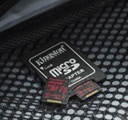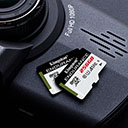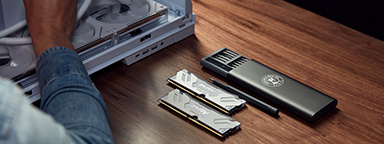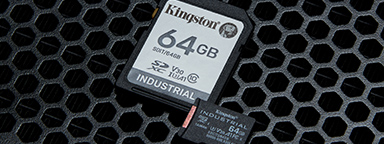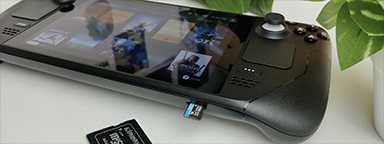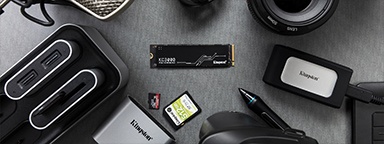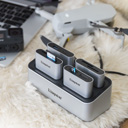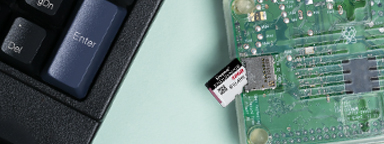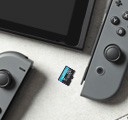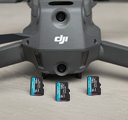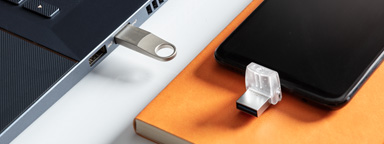A Guide to Speed Classes for SD and microSD Cards - Kingston Technology (original) (raw)
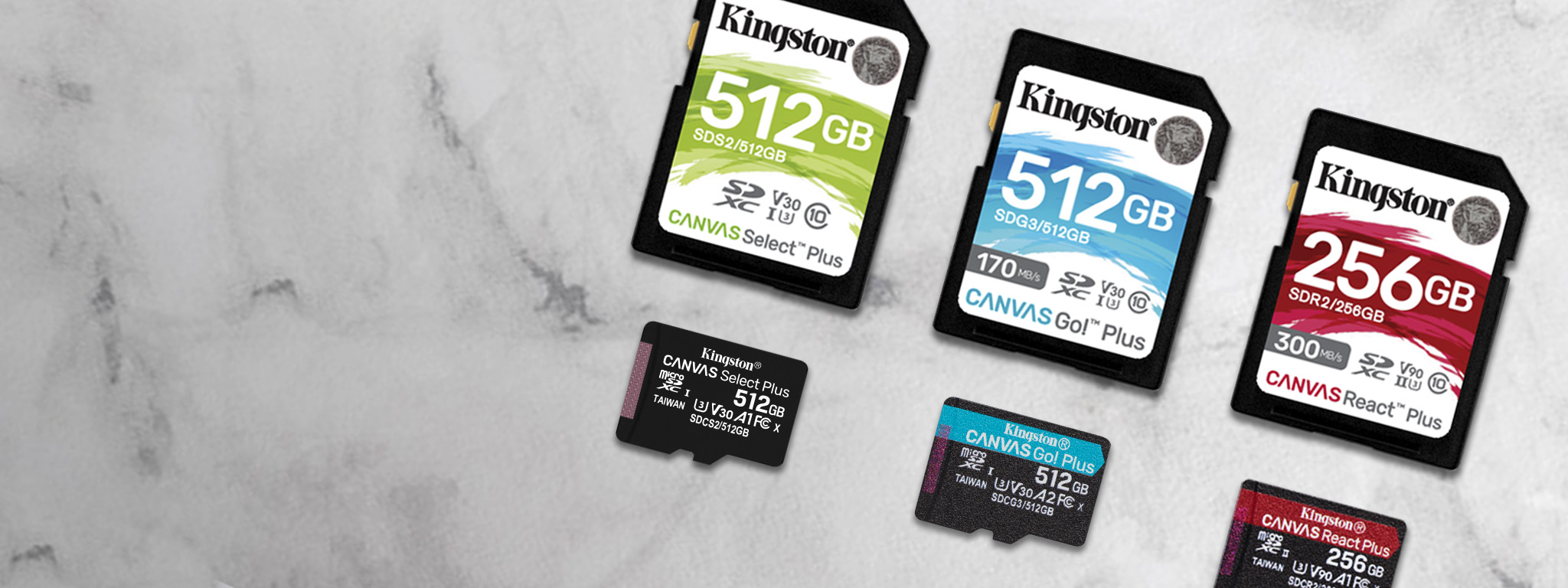
The SD Association came up with a way to standardize the speed ratings for memory cards. They are known as Speed Classes and refers to the absolute minimum sustained write speed for both SD and microSD cards. There are three types of speed class:
- Speed Class
- UHS Speed Class
- Video Speed Class
Numbers with a circular "C" symbol, "U" symbol or a "V" symbol next to or around it indicates the speed classes of the memory card. Manufacturers use these speed class symbols to indicate the type of speed class and rating on the memory card. They are intended to help consumers choose the right memory card for their hardware devices in terms of speed.
Speed Class
The very first speed class is simply known as the original speed class but since they’re denoted with a "C" symbol, let’s refer to it as C-Class for the rest of this guide. There are four ratings within the C-Class:
- C2 (Class 2): minimum write speed of 2MB/s
- C4 (Class 4): minimum write speed of 4MB/s
- C6 (Class 6): minimum write speed of 6MB/s
- C10 (Class 10): minimum write speed of 10MB/s
C2 is the slowest speed class while C10 is the industry standard. Because of newer hardware devices requiring newer speed classes with higher speeds and capabilities, hardly anyone uses Class 2–6 nowadays. C10 is usually the minimum speed class requirement for most hardware devices made today.
UHS Speed Class
The next speed class up is the UHS (Ultra-High Speed) Speed Class and it’s denoted with the “U” symbol. There are two ratings within the UHS Speed Class:
- U1 (UHS Speed Class 1): minimum write speed of 10MB/s
- U3 (UHS Speed Class 3): minimum write speed of 30MB/s
The UHS Speed Class is more commonly used nowadays than the Speed Class and many of the high-end cameras require at least a U3-rated memory card for many of its functions like recording high-resolution videos. The UHS Speed Class mainly refers to the minimum sustained writing performance for recording videos and came about due to 4K-capable video recording devices needing faster write speeds. As a rule of thumb, 4K-capable recording cameras will usually require at least a U3-rated SD card.
What makes the U1 and U3 memory cards more advanced than those in the Speed Class are that they use one of two UHS bus interfaces:
- UHS-I: theoretical maximum transfer speeds up to 104MB/s
- UHS-II: theoretical maximum transfer speeds up to 312MB/s
Both U1 and U3 memory cards can utilize the UHS-I bus interface but are not compatible with the UHS-II bus interface.
These UHS bus interfaces indicate the theoretical maximum read and write speeds unlike the sustained write speeds of speed classes. The UHS bus interfaces are denoted with a Roman numeral “I” or “II” symbol on the front of the card. The bus speeds refer to the theoretical data transfer rate of the interface itself while a U3-rated SD card has its own sustained write speed of 30MB/s. For example, a UHS-I U3-rated card guarantees a write speed of 30MB/s but has the potential for a read and write speed of up to 104MB/s if used with a device that supports a UHS-I bus interface.
A UHS-II compatible card has a potential read and write speed of up to 312MB/s. The UHS bus interfaces are backwards-compatible so you can use a UHS-II card in a device that supports UHS-I, but you won’t see the speed benefits of UHS-II as the card will default back to the lower specs of UHS-I. Both the card and bus interface must be fully compatible to experience the speed benefits.
Video Speed Class
The latest Video Speed Class was created to enable higher video resolution and recording features such as multiple video streams, 360-degree capture, VR content, and 4K or 8K resolution videos. They’re usually denoted with the “V” symbol. There are five ratings for the Video Speed Class:
- V6 (Video Speed Class 6): minimum write speed of 6MB/s
- V10 (Video Speed Class 10): minimum write speed of 10MB/s
- V30 (Video Speed Class 30): minimum write speed of 30MB/s
- V60 (Video Speed Class 60): minimum write speed of 60MB/s
- V90 (Video Speed Class 90): minimum write speed of 90MB/s
The Video Speed Class is unique because it’s capable of utilizing both the UHS-I and UHS-II bus interfaces. V6 to V90 speed class memory cards can use the UHS-II bus interface, but the UHS-I bus interface can only support V6 to V30 speed class memory cards.
The Video Speed Class offers the fastest speeds available and is ideal for ultra-high-resolution videos, high-quality videos and multi-file recording in drones and 360-degree cameras. It supports HD formats up to 8K video in drones, 360-degree cameras, action cams and VR cameras.
You can find the best card for your hardware device by choosing the same speed class or higher that’s required for your device. For example, if your device requires a Class 4 memory card, you can use Speed Class 4, 6, or 10. If your device requires a UHS Speed Class 1 card, you can use UHS Speed Class 1 or 3. The same functionality applies to the Video Speed Class as well. Note, using a higher-rated card that goes beyond the speed class requirement for a device will still work, but you won’t be experiencing the full benefits of the higher speed class since the device only supports the lower speed class.
#KingstonIsWithYou
-
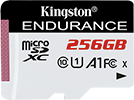
- For home security, professional surveillance, body and dash cams
- UHS-I Speed Class 1 (U1) A1
- 32GB, 64GB, 128GB, 256GB
- Up to 95MB/s read, 45MB/s write
-

- For shooting 4K UHD video and burst-mode photography
- UHS-I Video Speed Class (V30)
- 64GB, 128GB, 256GB, 512GB, 1TB
- Up to 170MB/s Read, 90MB/s Write
-

- For shooting 4K UHD video and burst-mode photography
- UHS-I Video Speed Class (V30)
- A2 App Support for Android
- 64GB, 128GB, 256GB, 512GB, 1TB
- Up to 170MB/s Read, 90MB/s Write
-
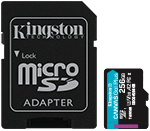
- For gaming, drones, action cameras, and Android devices
- UHS-I Video Speed Class (V30)
- A2 App Support for Android
- 64GB, 128GB, 256GB, 512GB, 1TB
- Up to 200MB/s Read, 160MB/s Write
-

- For shooting 4K UHD video and fast-action photos
- UHS-I Video Speed Class (V30)
- 64GB, 128GB, 256GB, 512GB, 1TB
- 200MB/s read, Up to 160MB/s write
-

- For industry-standard professional UHS-II cameras shooting in 8K resolution
- UHS-II Video Speed Class (V90)
- 32GB, 64GB, 128GB, 256GB
- 300MB/s Read, 260MB/s Write
-

- For UHS-II cameras shooting in 4K resolution
- UHS-II Video Speed Class (V60)
- 128GB, 256GB, 512GB, 1TB
- 280MB/s Read, up to 150MB/s Write
-

- For high resolution photos and Full HD videos
- UHS-I Video Speed Class (V10/V30)
- 64GB, 128GB, 256GB, 512GB, 1TB
- Up to 150MB/s Read
-

- For high resolution photos and Full HD videos
- UHS-I Video Speed Class (V10/V30)
- 64GB, 128GB, 256GB, 512GB
- Up to 100MB/s Read, 85MB/s Write
-
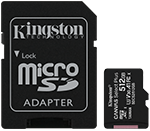
- 64GB, 128GB, 256GB, 512GB
- Up to 100MB/s Read, 85MB/s Write
- UHS-I Speeds
- A1 App Support for Android
-

- For Android devices and cameras
- UHS-I Video Speed Class (V10/V30)
- A1 App Support for Android
- 64GB, 128GB, 256GB, 512GB, 1TB
- Up to 150MB/s Read
-

- For industrial applications in extreme conditions
- UHS-I Speed Class U3, V30, A1
- 8GB, 16GB, 32GB, 64GB
- 100MB/s Read, 80MB/s Write
-

- For industrial applications in extreme conditions
- UHS-I Speed Class U3, V30, A1
- 8GB, 16GB, 32GB, 64GB
- 100MB/s Read, 80MB/s Write
No products match your current filter selection. Try adjusting your filters to explore more options.
Understanding the Naming Conventions and Labels of SD and microSD Cards
How can a SD or microSD card be rated at both C10 and U3 if one means 10MB/s and the other means 30MB/s? Let us explain.
A Guide to SD and microSD Card Types
What is SDHC, SDXC, SDUC and microSD, microSDHC, microSDXC, and microSDUC? What should I use for each type of device? We will guide you on selecting the right card for your gear.
How to Select the Right Memory Card for Your Use
There are many factors in choosing a memory card such as speed, capacity and device type. We’ll help you choose the right card.
Flash Memory Storage Chart
A chart which shows how many images, videos and files you can store on SSD drives, USB flash drives and memory flash cards.
Choosing Storage for Your Android Device
First, look for Class A1 or Class A2 markings. As for capacity, microSD cards can hold up to 512GB of storage.
Optimizing Dashcam Performance with the Right microSD Card
Learn more about the benefits of choosing different microSD cards for your dashcam.
Enhancing Young Driver’s Training Experience with Kingston’s microSDs
Find out why Young Driver chooses Kingston’s microSD cards for in-car recording.
Making Your Photography Portfolio
Demonstrate your photography talents with a professional portfolio that features these tips.
Tips for Outdoor Photography
Tips and pointers for getting the best from your camera when shooting outdoors.
The Role of Reliable SSDs in the Media and Broadcasting Industry
Reliable SSDs transform media workflows for heightened productivity and competitiveness.
Enhancing Content Creator’s Workflow with Kingston SSDs and Memory
Kingston's server SSD and memory transformed Android Basha's production workflow.
Performance Photographer Ralph Larmann in the Digital Darkroom
Kingston storage solutions help improve performance photographer Ralph Larmann’s workflow.
Overclocking Memory for Adobe Applications
Learn how Kingston FURY helps work PCs run faster in Adobe Photoshop, and Premiere Pro.
File Sizes of Triple-A Game
Which recent games have the largest file sizes? Why are they so large? How can we mitigate this?
Choosing a Memory Card for Trail Cams
Learn why industrial memory cards are perfect for the growing field of trail camera photography.
Get to know the features of the Kingston Industrial cards
There are many features in Kingston’s Industrial cards like Bad Block Management and Wear Leveling.
Storage for Photographers: Best Practices for Storing and Archiving Images
Photographers can store and archive their images by following our best practices.
Videographers: Why You Should Consider an SSD and How to Get the Most Out of It
What can SSDs do for videographers? SSDs’ speed, reliability, security are perfect for video.
Photography in a Snapshot
Thoughts from a pro photographer on Kingston memory cards and other photography gear.
Drone Photography Tips
Here are some drone basics and tips to assist with your sky-high photography.
How to Choose Storage for a GoPro Camera
We help you pick the best microSD card for your GoPro.
Additional Storage for Your Valve Steam Deck
Valve’s Steam Deck uses microSD cards for expanded storage. Which one is right for you?
Upgrade Your PC to Streamline Your Workflow
Take advantage of these upgrades to streamline your workflow.
The Best Storage Options for Gaming Consoles
This article will look at some of the best storage options available for your gaming console.
The Best Storage Options for Creatives and When to Use Them
Here, we look at the best storage options for creatives - memory cards, SSDs, HDDs, and the cloud.
How to Choose the Right Memory Card for Your Dash Cam
Storage is a crucial part of using a dash cam and high-endurance cards are designed especially for heavy use.
A Kingston Gift Guide for STEAM Majors
Here are some tech gift ideas for the STEAM major students in your life.
The Kingston Workflow Station Makes Things Easy for Content Creators and Video Professionals
Learn how the Kingston Workflow Station can make file transfers out in the field faster for professionals.
How to Choose a Memory Card for Shooting 4K Video
Flash memory cards for capturing 4K video need the right capacity, write speed, data transfer speed, and video speed.
How Much Memory Do You Need for Video Editing?
More DRAM means faster PC performance when editing from video, from playback responsiveness to render time. But is 8, 16, 32, or 64GB enough? How much do you need for 1080p, 4K, or 8K?
Choosing Storage for Raspberry Pi
What is the best class, capacity and endurance level microSD card to use with a Raspberry Pi
Choosing the Right Memory Card for Your Security Camera
When selecting storage for your security camera, you must consider the memory card’s capacity, speed, and durability.
Choosing a microSD Card for Your Nintendo Switch
The Nintendo Switch comes with 32GB of internal storage, expandable with a microSD card that will hold more games. But how do you pick a card?
Choosing microSD Cards for Your Drone Adventures
How fast does the write speed and capacity of a microSD card for drones really need to be? How many cards do you need?
7 Easy Tips to Increase Productivity While Working from Home
Having a dedicated workspace, setting priorities, and eliminating distractions are just a few ways to increase productivity from home.
What’s the Difference Between USB 3.1 Gen 1, Gen 2 and USB 3.2?
USB 3.1 Gen 1 supports speeds of up to 5Gbit/s while USB 3.1 Gen 2 supports speeds of up to 10Gbit/s.



